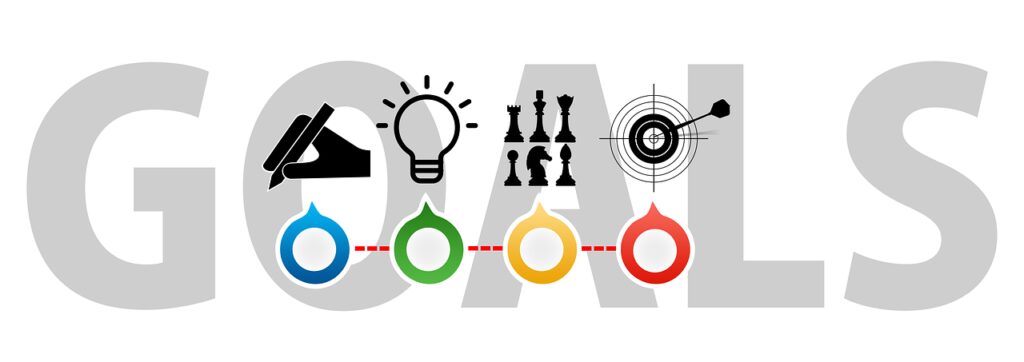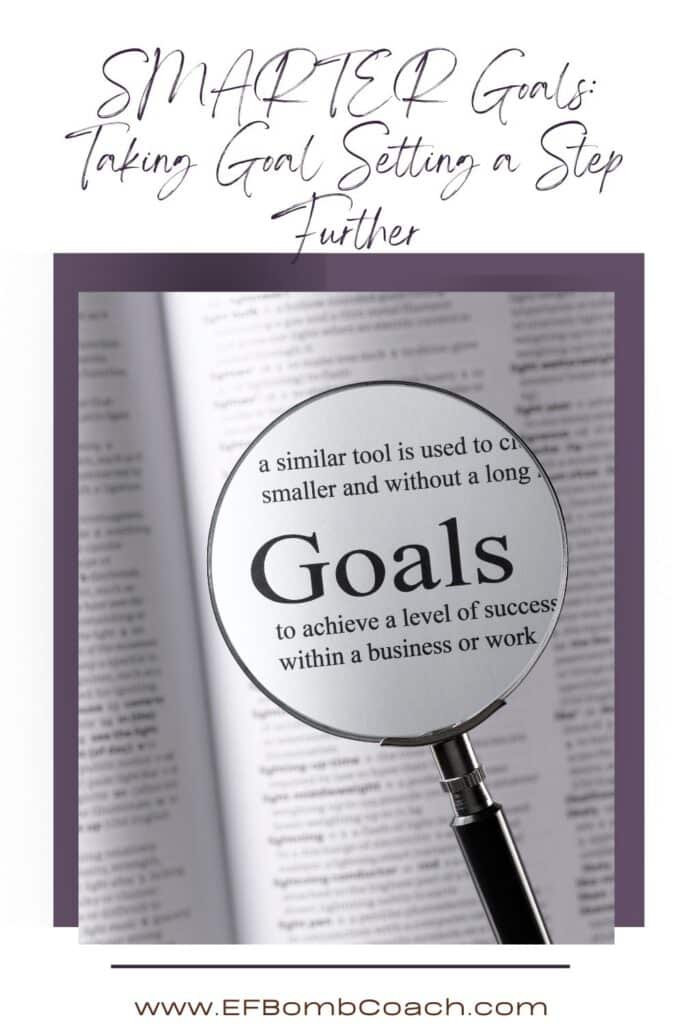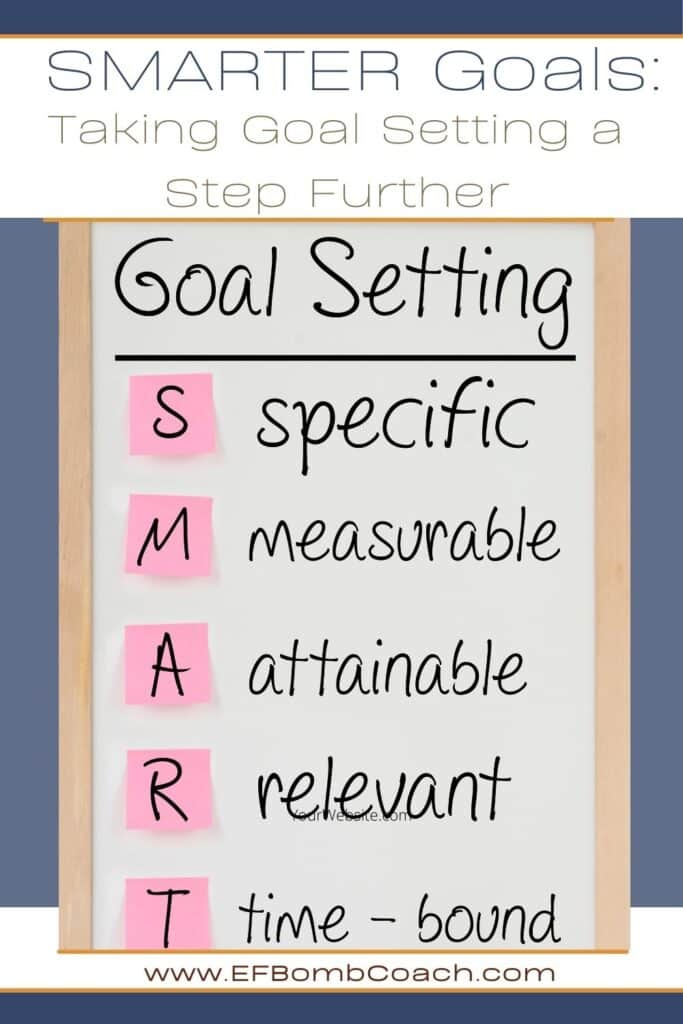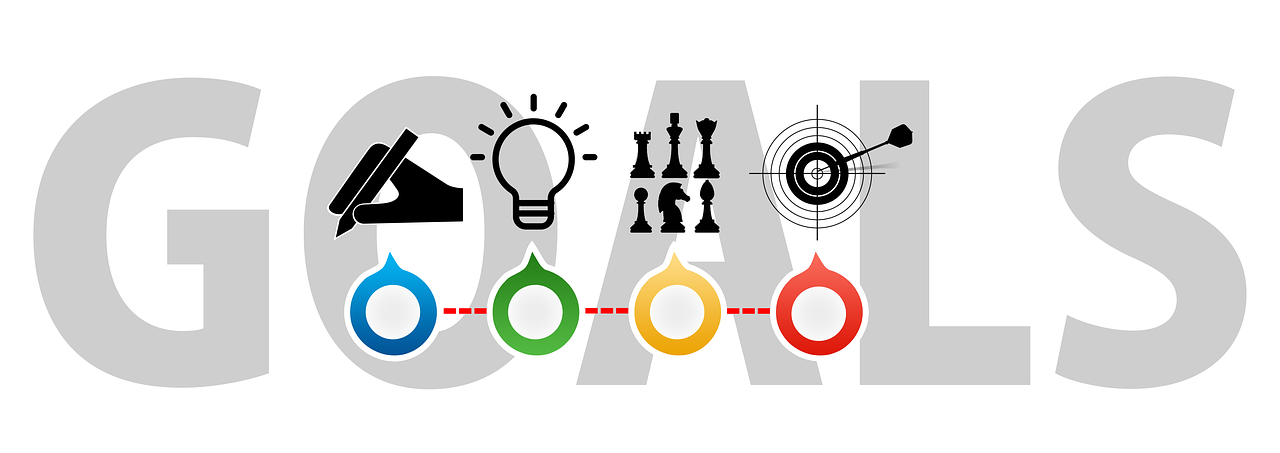SMARTER Goals: Taking Goal Setting a Step Further
Setting effective goals is crucial for your personal and professional growth. SMARTER Goals provide a structured approach to goal setting that enhances clarity and accountability. By applying this framework, you can transform vague intentions into actionable plans that lead to real results.
Prefer to listen rather than read? Press play below.
Incorporating the SMARTER criteria helps you create a roadmap that is easy to follow and adjust as needed. Each element of SMARTER prompts you to think critically about what you want to achieve and how you plan to get there. For me, having a clear roadmap reduces anxiety and makes the journey feel more manageable. This not only motivates you but also keeps you aligned with your long-term objectives.

Foundation of SMARTER Goals
The concept of SMARTER goals builds upon traditional goal-setting frameworks, enhancing clarity and motivation. The added “ER” for Evaluate and Review is particularly helpful; I find it keeps me honest with myself about what's working and what isn't.
Origins and Evolution
The SMART goal framework originated in the 1980s, introduced by George T. Doran in a paper for Management Review. The initial criteria were Specific, Measurable, Achievable, Relevant, and Time-bound. Over time, practitioners recognized the need for additional components, leading to the inclusion of Evaluated and Revised, forming the SMARTER acronym.
This evolution reflects a shift in understanding how goals should adapt to changing circumstances. Including evaluation and revision encourages continuous improvement and responsiveness, ensuring goals remain relevant and achievable as situations evolve.
Benefits of Goal-Setting
Setting goals provides direction and purpose in both personal and professional life. SMARTER goals offer specific advantages that enhance this process.
- Clarity: Clear criteria eliminate ambiguity, allowing you to understand exactly what you want to achieve. Knowing exactly what I'm working toward helps me feel less scattered.
- Motivation: Well-defined goals increase engagement and commitment as you track progress. Every small win along the way boosts my motivation to keep going.
- Adaptability: The evaluation and revision aspects enable you to respond to unexpected changes, keeping you on track. This is building in room for life’s curveballs.
- Focus: Specific and measurable goals help prioritize actions, reducing distractions and enhancing productivity.

Want to learn more about executive functioning? Take my FREE course.
Understanding the Acronym SMARTER
SMARTER goals provide a structured approach to setting objectives that enhance focus and increase the likelihood of success. The acronym encompasses key components: Specific, Measurable, Achievable, Relevant, Time-bound, Evaluate, and Review.
Specific Goals
Specific goals clearly define what you want to achieve. Being precise eliminates vagueness and provides clarity. For example, instead of saying, “I want to get fit,” specify, “I will run 3 times a week for 30 minutes.”
When setting specific goals, consider the who, what, where, and why. This will help you understand exactly what you need to focus on. Using distinct language helps to frame your intentions clearly.
Measurable Progress
Measurable goals enable you to track your progress effectively. Define how you will measure success, using metrics or indicators that are concrete. This can involve numbers, percentages, or milestones.
For instance, if you're aiming to save money, specify, “I will save $200 every month for the next six months.” This allows you to monitor your achievements and make adjustments as necessary, providing motivation along the way.
Achievable Objectives
Achievable goals are realistic and attainable, setting you up for success rather than failure. Consider your resources, skills, and time constraints when setting these objectives.
For example, aiming to read 50 books in a year might be challenging if you have a busy schedule. Instead, set a goal to read one book per month, which is more manageable and likely to keep you engaged.
Relevant Targets
Your goals should be relevant to your broader life objectives and values. Ensuring alignment with your priorities increases motivation and commitment.
Ask yourself if the goal matters to you and how it fits into your overall vision. If your aspiration is to advance in your career, a relevant goal might be to complete a certification related to your field.
Time-Bound Deadlines
Having a deadline to work toward creates a sense of urgency and helps prioritize tasks. Time-bound goals specify when you want to achieve your objectives, enhancing accountability.
And let's face it: without a deadline, that goal will sit for a long time.
For instance, instead of “I will work on my project,” say, “I will complete my project by December 15.” Deadlines foster a commitment to regular progress checks and help keep you on track.
Evaluate and Review
Regular evaluation and review of your goals are critical for sustained progress. Set intervals to assess your achievements, challenges, and modification needs.
Use tools like journals or spreadsheets to track what works and what doesn’t. This step allows you to adjust your strategies, ensuring you remain aligned with your objectives and responsive to changes in circumstances.

Setting SMARTER Goals
Setting SMARTER goals involves a structured approach. By identifying specific targets, crafting actionable strategies, and monitoring progress meticulously, you can drive meaningful outcomes.
Crafting Effective Strategies
Once you have identified your objectives (using the SMARTER framework), develop strategies to achieve them. Break each goal down into actionable steps.
Research: Gather information relevant to your goals. Knowledge about resources and potential obstacles is crucial.
Plan: Create a detailed plan that outlines specific actions you will take.
Prioritize: Use a priority matrix to determine which actions will yield the best results. Focus on high-impact tasks.
Resource Allocation: Identify what resources you will need, including time, money, and support.
Flexibility: Be prepared to adapt your strategy as necessary. Changing circumstances may require new approaches.
Monitoring Progress
Tracking your progress is essential to ensure you stay on course. This is the addition of the ER in SMARTER goals. Establish systems to assess how well you’re doing.
Regular Check-ins: Set weekly or monthly reviews to evaluate your progress. Adjust your approach based on these reflections.
Milestones: Create short-term milestones that align with your long-term goals. Acknowledge and celebrate these achievements.
Feedback: Seek input from trusted peers or mentors. They can provide valuable insights and encouragement.
Adjustments: If progress stalls, analyze why. Modify your strategies as needed to overcome barriers.
By systematically following these steps, you improve your chances of achieving your SMARTER goals successfully.

Did you know I have a membership for women who want to improve their executive function skills? Check it out here.
Challenges in Goal-Setting
Setting goals can be an empowering process, but it's not without its challenges.
Many people encounter typical mistakes during goal-setting. One frequent issue is creating vague objectives. For instance, stating “I want to get fit” lacks specificity. Instead, aim for a clear target like “I will exercise for 30 minutes, five times a week.”
Another pitfall is setting unrealistic expectations. If your goal is to lose 50 pounds in two months, the likelihood of failure increases. Break down larger goals into smaller, achievable milestones.
Additionally, failing to track progress can hinder motivation. Utilize tools like checklists or apps to monitor your journey. This creates accountability and helps maintain focus.
Implementing Goals into Daily Life
Bringing SMARTER goals into your daily routine requires practical techniques and a plan for sustaining progress.
Integration Techniques
To implement your goals, start by breaking them down into smaller steps. This makes them manageable. Use the following strategies:
- Daily Reminders: Set reminders on your phone or calendar to keep your goals in focus.
- Visual Cues: Create a vision board or use sticky notes in visible places to remind yourself daily.
- Time Management: Allocate specific time slots in your day for goal-related tasks. This creates a routine centered around your objectives.
Incorporate reflection time weekly to assess your progress. Take note of what works well and what needs adjustment.
Maintaining Momentum
To sustain your progress, you must actively engage with your goals. Here are effective ways to maintain momentum:
- Celebrate Milestones: Recognize small achievements to reinforce positive behavior. This can motivate you to keep pushing forward.
- Stay Flexible: Life can change unexpectedly. Adapt your goals as needed to stay relevant and attainable.
- Accountability Partners: Share your goals with friends or family who can offer support and hold you accountable.
Regularly reassess your goals to ensure they align with your values. This connection will keep your motivation strong and your focus sharp.
I've talked about SMART goals a number of times because it is a proven method as a goal-setting framework. That said, it's not for everyone. Many neurodivergent people struggle with the steps of this framework. So if it doesn't work for you, it's time to experiment with a different strategy.









